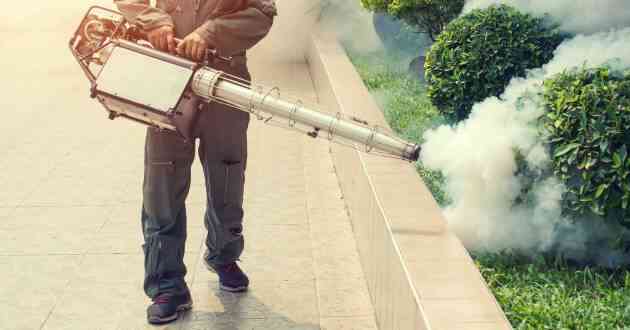Pest Control Services Explained: From Inspection To Prevention
- - Category: Pest Control
- - 30 Oct, 2024
- - Views: 59
- Save

Pest control can be a serious problem. Professional pest control services can help.
In the battle against unwanted pests, knowledge is your most powerful weapon. Whether you're dealing with a sudden invasion of ants in your kitchen or the unsettling presence of termites threatening to turn your home into their next meal, understanding pest control services can be the difference between peace of mind and sleepless nights. This guide aims to demystify the process of pest control from start to finish. We will explore everything from initial inspections to targeted treatments and long-term prevention strategies. With a clear, concise, and friendly tone, this blog will equip you with all the information you need to keep your home safe and pest-free.
Inspections
The first step in any effective pest control service is a thorough inspection. A professional pest controller will visit your property and conduct a meticulous assessment. This isn't just about spotting obvious signs like droppings or nests; it involves understanding how pests are entering your space, identifying potential breeding grounds, and evaluating environmental factors that might be contributing to the problem. The goal here is to get a comprehensive picture that enables tailor-made solutions for your specific situation. An inspection also helps in determining whether you're dealing with multiple types of pests or if there are underlying structural issues that need attention.
Diagnosis and Planning
Once the inspection phase is complete, it's time for diagnosis and planning. Armed with data from their findings, pest control specialists devise an action plan that's both effective and minimally invasive. It's crucial at this stage for communication between the homeowner and service provider to be clear—understanding what's happening allows you as the homeowner to make informed decisions about treatment options. You'll discuss what chemicals (if any) are necessary, alternative methods like traps or baits, and what sort of follow-up might be required.
Treatment
The actual treatment phase can vary significantly depending on the type of infestation being addressed. For instance, dealing with termites might involve soil treatments around the foundation or using baiting systems strategically placed around your property. Rodent problems could require setting traps in key locations while leveraging exclusion techniques to seal entry points permanently. Each method comes with its own set of protocols designed not just for effectiveness but also for safety—for both human inhabitants and pets.
Education
Education plays an integral role during this journey as well; reputable pest control services take time to educate homeowners on maintenance tips post-treatment. This includes advice on reducing clutter where pests hide, proper food storage techniques that deter invaders like ants or rodents, regular cleaning habits that minimize attractants such as crumbs or spills, and maintaining yard cleanliness by trimming shrubs away from walls which often serve as bridges for insects.
Prevention
Finally—and perhaps most importantly—is prevention. Successful pest management hinges not only on eliminating current infestations but also on preventing future ones from taking root. This often involves setting up routine inspections at strategic intervals throughout the year—especially during peak seasons when certain pests become more active due to weather changes—and implementing preventative measures such as installing screens on windows or using weather stripping under doors.
Understanding the full spectrum of pest control services—from insightful inspections through targeted treatments right down to ongoing prevention—empowers homeowners like never before in combating unwelcome intruders effectively and sustainably over time. Investing in professional expertise ensures not only immediate relief but also secures long-term protection against future infestations that may otherwise go unnoticed until they cause significant damage or discomfort within living spaces. So remember: knowledge combined with proactive action truly makes all the difference when it comes to keeping those pesky critters at bay!



